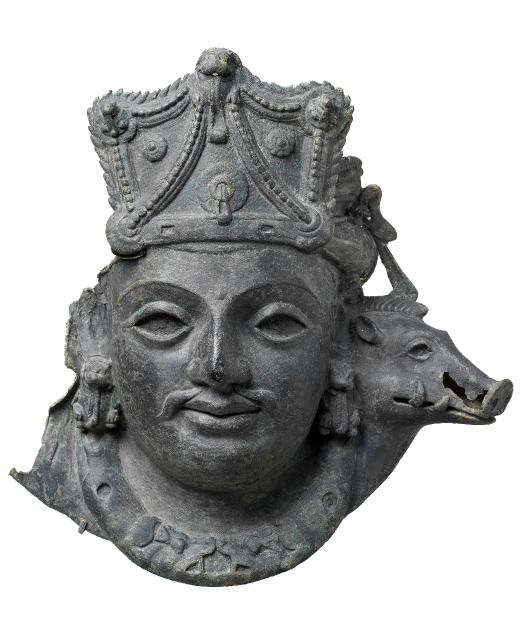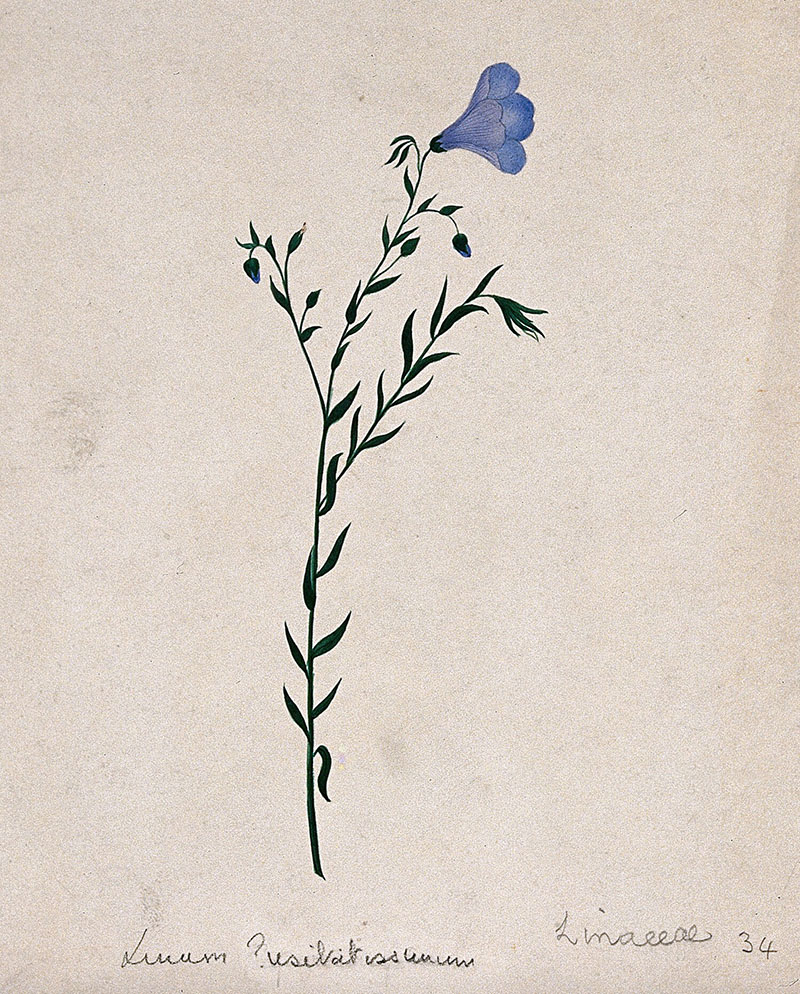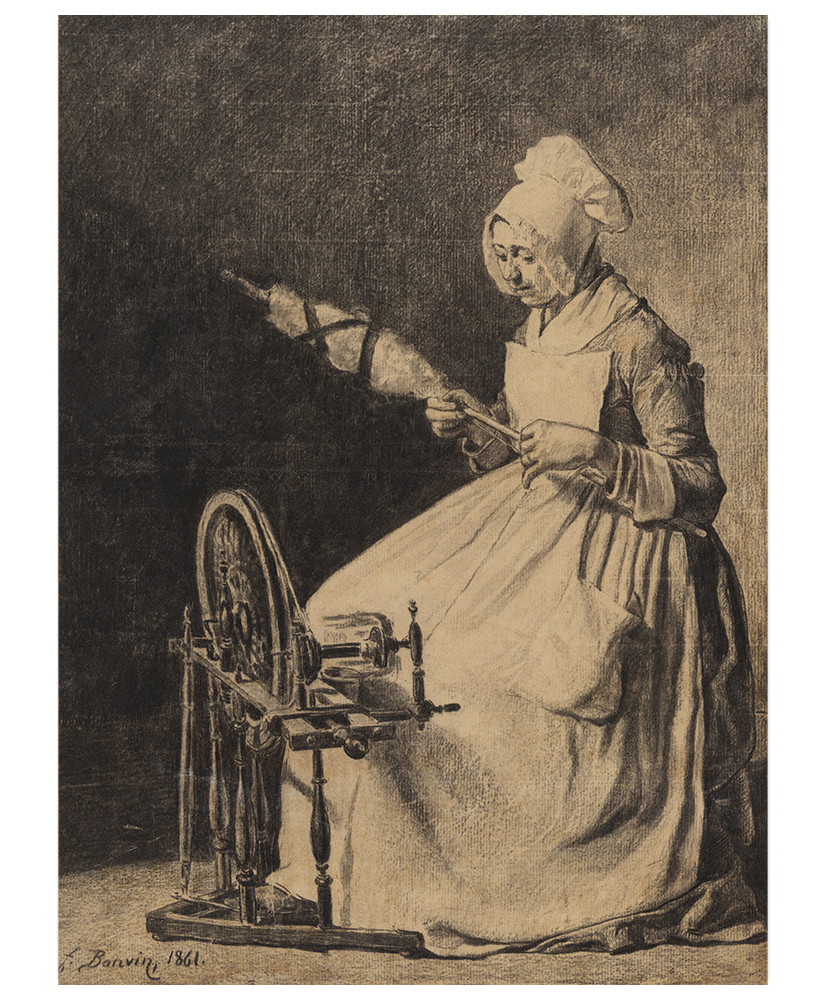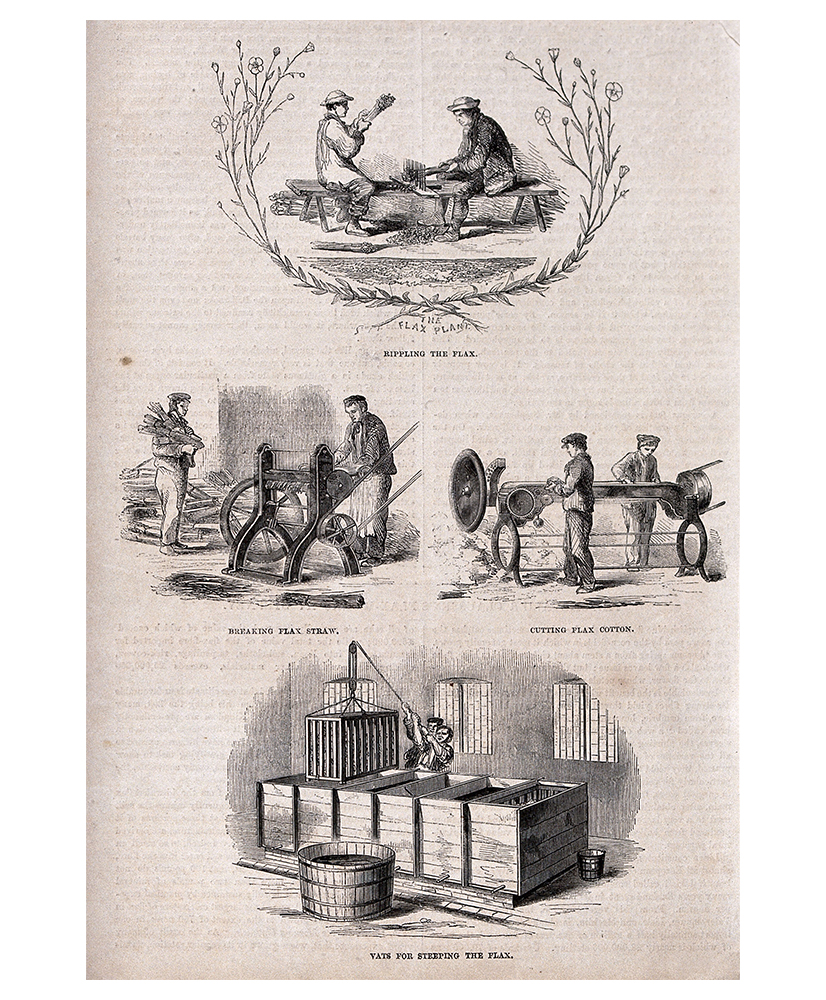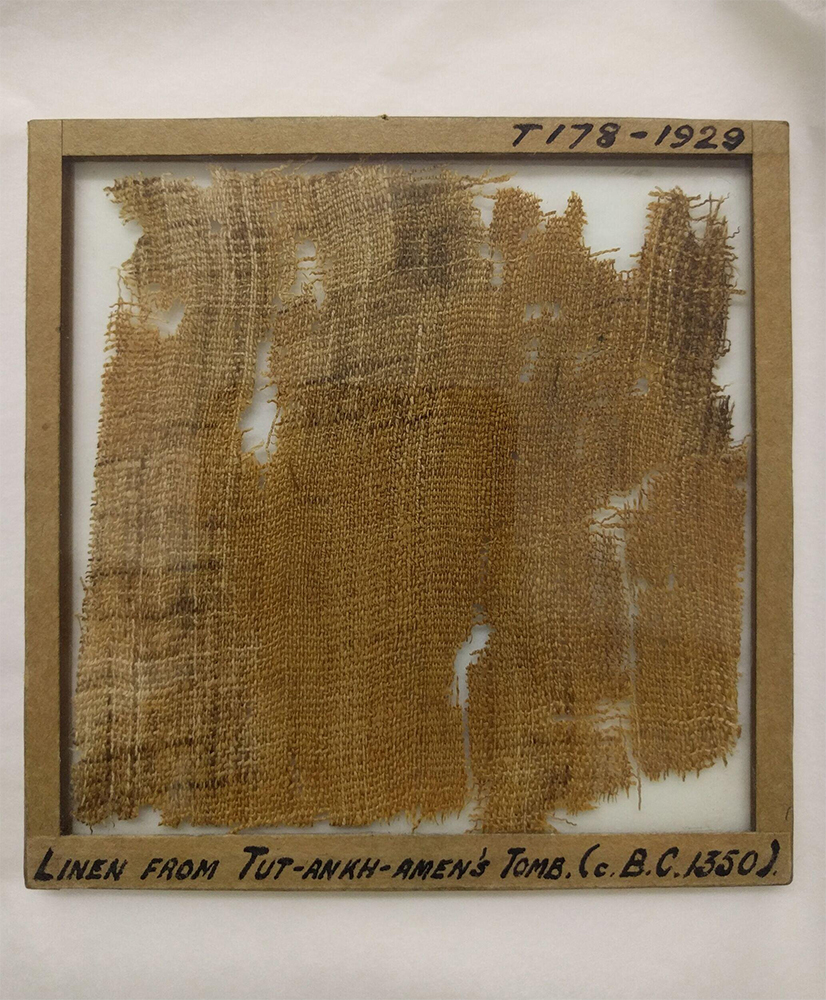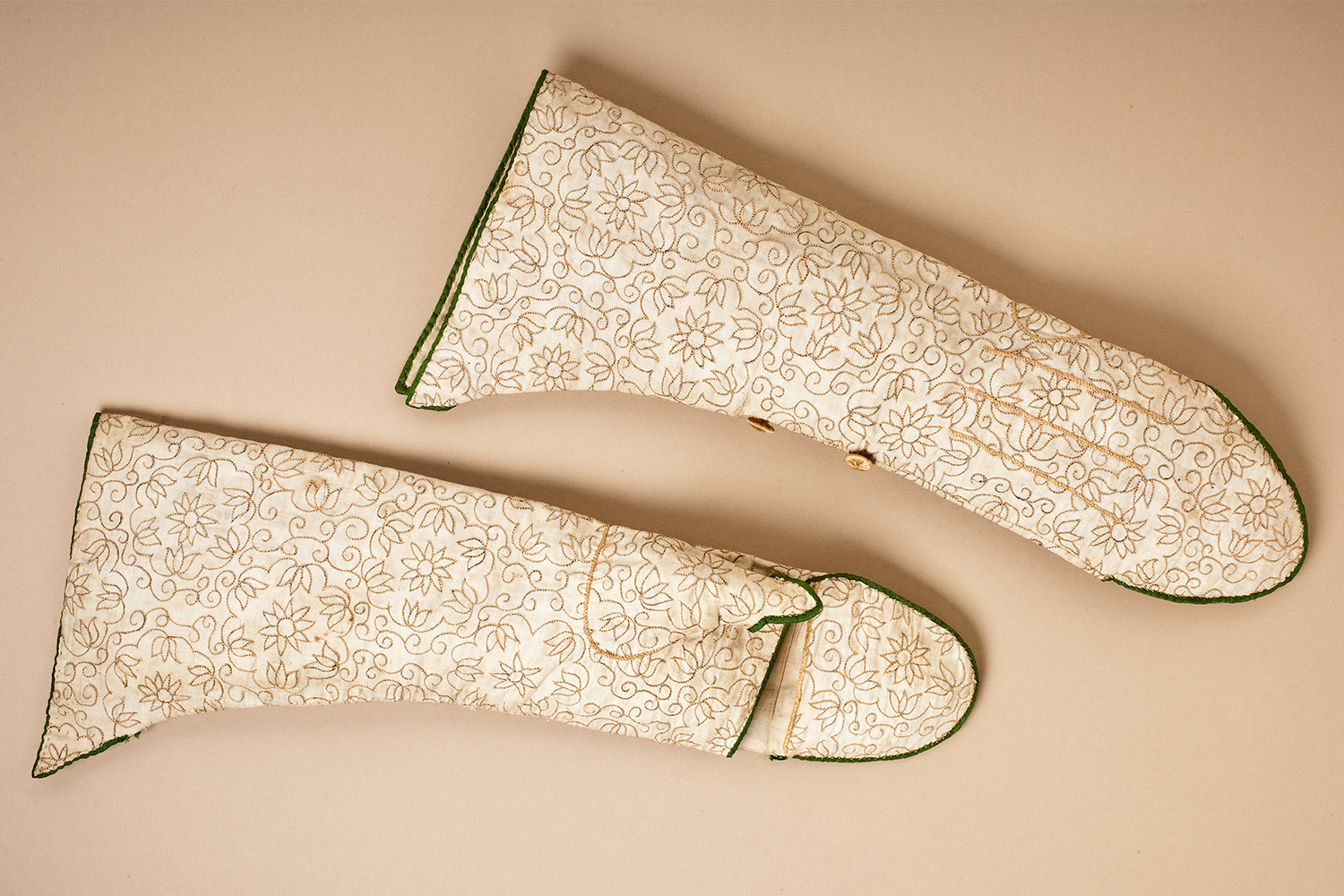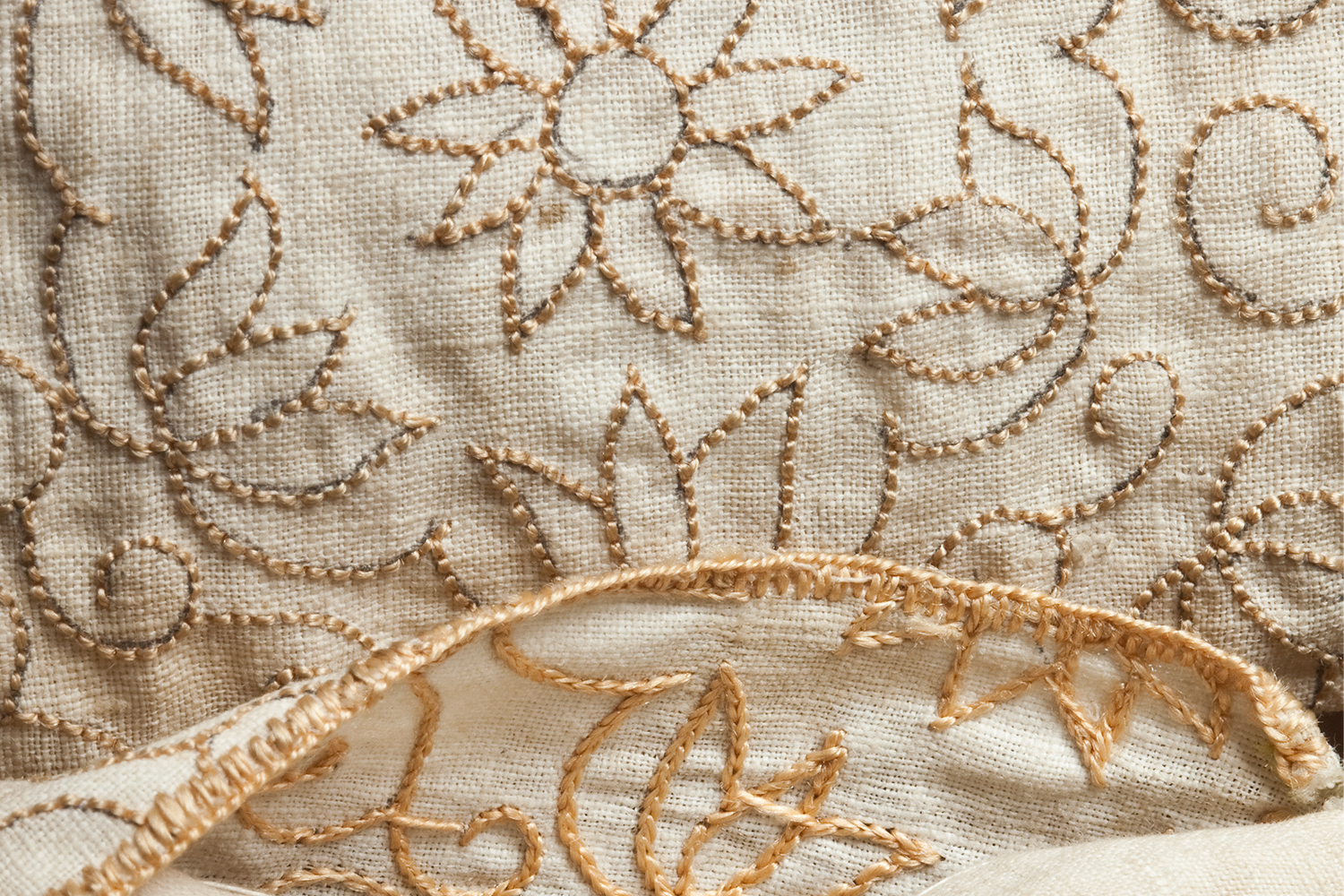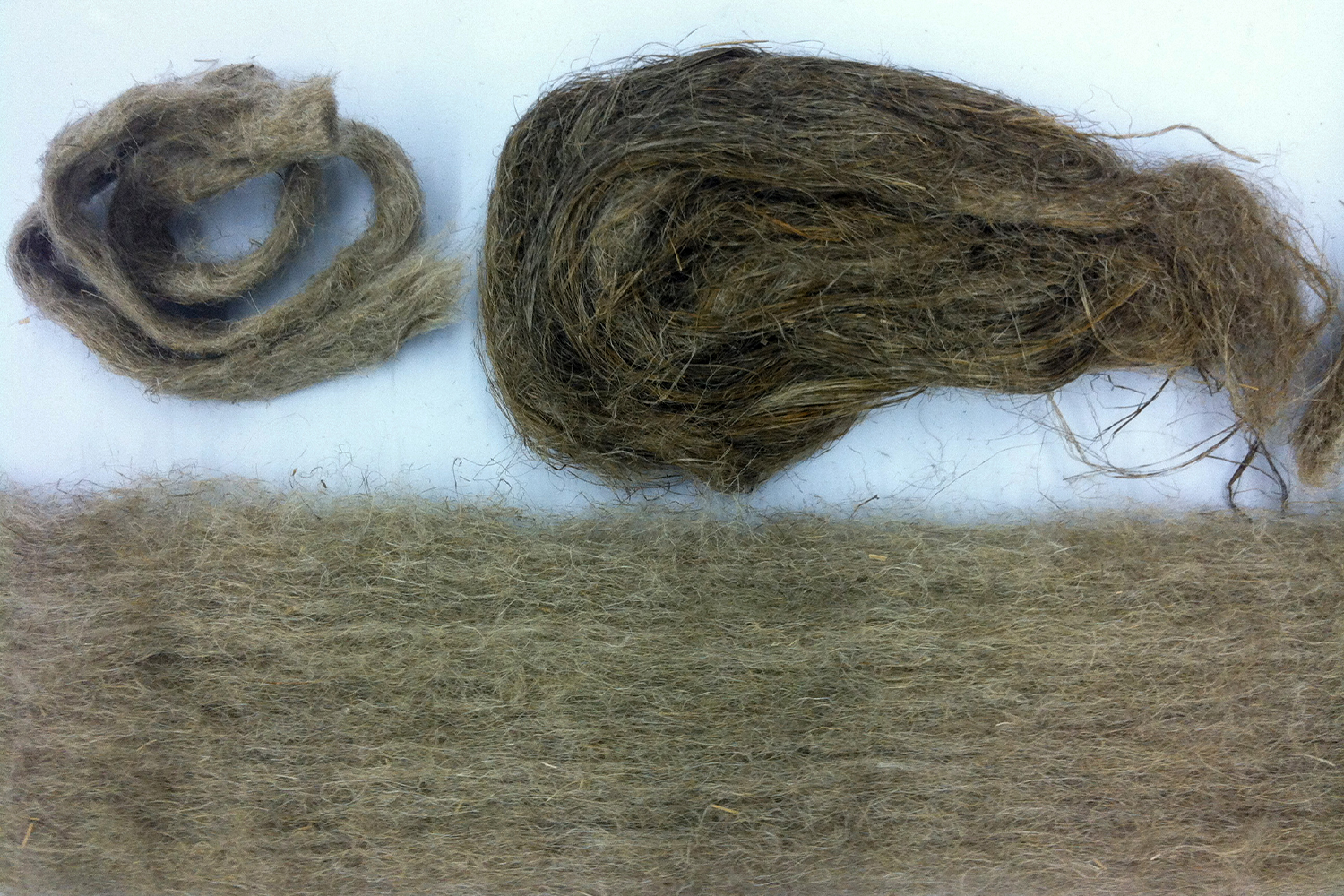ARTICLE
Linen
The next step is retting, a crucial process of fermentation that breaks down the compounds binding the fibres, thereby releasing them from the rest of the stalk — this is done through prolonged exposure to moisture, either by spreading the stalks out in the field to be ‘dew-retted’ or submerged under a pool or stream of water to be ‘wet-retted’. After this, the stalks are dried fully and scutched (beaten), and finally combed to remove any non-fibre material. The coarse fibres are also separated. The remaining long, fine-grade fibres, called dressed flax, are spun into yarn for linen; they are often subjected to additional treatment processes to make them softer and more lustrous. The shorter, coarser fibres left behind are used to make goods such as canvas, fishing nets and twine, or combined with other fibres such as cotton to make blended fabrics.
Fragments of flax fibres used by humans, including dyed fibres, have been found in caves in present-day Georgia and the Czech Republic, dating as far back as 34,000 years. There is evidence of linen being woven since at least as early as 8000 BCE. It was widely used for clothing in ancient Egypt, and was also used to wrap mummies — well-preserved linen dating to 3000 BCE has been found in Egyptian tombs. With Phoenician trade from the fourth millennium BCE, knowledge of linen production was dispersed across the Mediterranean, and had arrived in the Indian subcontinent at least by the second or first millennium BCE.
Linen is mentioned as a ceremonial fabric, referred to as kshauma, in the Vedas and the epics Ramayana and Mahabharata. During the reign of the Maurya dynasty (between the fourth and second centuries BCE), flax was cultivated as a cash crop, and the Arthashastra, thought to have been composed around this time, details the production of linen and mentions imperial linen weaving centres in present-day Assam. In the ancient period, the textile finds mention in the accounts of travellers such as the Chinese monk Xuanzang in the royal court of king Harsha Vardhana (r. 606–641 CE) of Kannauj (in present-day Uttar Pradesh).
By the Middle Ages flax and linen manufacture and trade were thriving in Europe, with Germany and Ireland as significant centres. Linen was the most popular and preferred summer fabric in the West until the nineteenth century, when it was largely replaced by cotton, which was mass produced and more easily accessible through innovations introduced during the Industrial Revolution.
Flax makes up less than 1% of textile fibres used globally today, with the European Union ranking as the largest manufacturer in the world. Linen is mainly used to make clothing, and for bedspreads and other domestic textile products, which have also collectively come to be termed as ‘linen’, regardless of the material they are made from. Flax is also combined with other fibres to make a variety of blended fabrics.
Bibliography
Akin, Danny E. “Linen Most Useful: Perspectives on Structure, Chemistry, and Enzymes for Retting Flax.” ISRN Biotechnology (December 30, 2012). https://doi.org/10.5402/2013/186534.
Barker, Walter S. “Flax: The Fiber and Seed. A Study in Agricultural Contrasts.” The Quarterly Journal of Economics 31, no. 3 (1917): 500–29. https://doi.org/10.2307/1883386.
Britannica, T. Editors of Encyclopaedia. “Flax.” Encyclopedia Britannica, February 18, 2023. Accessed December 19, 2024. https://www.britannica.com/plant/flax.
“Flax (Linen).” Council of Fashion Designers of America. Accessed February 27, 2023. https://cfda.com/resources/materials/detail/flax-linen.
Gulati, A. N. “A Note on the Early History of Flax.” Bulletin of the Deccan College Research Institute 22 (1963): 112–17. http://www.jstor.org/stable/42930823.
Lavoie, Amy. “Oldest-Known Fibers to Be Used by Humans Discovered.” The Harvard Gazette. September 10, 2009. Accessed March 14, 2023. https://news.harvard.edu/gazette/story/2009/09/oldest-known-fibers-discovered/.
“Microbiology of Retting.” Nature 157 (1946): 829–30. https://doi.org/10.1038/157829a0.
Pandey, Ritu. “History of Linen in Indian Subcontinent.” Agropedia, September 27, 2016. Accessed March 9, 2023. http://agropedia.iitk.ac.in/content/history-linen-indian-subcontinent.
Victoria and Albert Museum. “Linen: The Original Sustainable Material.” Articles. Accessed March 1, 2023. https://www.vam.ac.uk/articles/linen-the-original-sustainable-material.
X-Q. Dai, “Fibers.” In Biomechanical Engineering of Textiles and Clothing, 163–77. Sawston: Woodhead Publishing, 2006.
